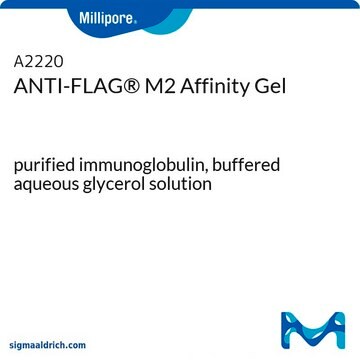If this product has an expiration or retest date, it will be shown on the Certificate of Analysis (COA, CofA). If there is no retest or expiration date listed on the product's COA, we do not have suitable stability data to determine a shelf life. For these products, the only date on the COA will be the release date; a retest, expiration, or use-by-date will not be displayed.
For all products, we recommend handling per defined conditions as printed in our product literature and website product descriptions. We recommend that products should be routinely inspected by customers to ensure they perform as expected.
For products without retest or expiration dates, our standard warranty of 1 year from the date of shipment is applicable.
For more information, please refer to the Product Dating Information document: https://www.sigmaaldrich.com/deepweb/assets/sigmaaldrich/marketing/global/documents/449/386/product-dating-information-mk.pdf
155810
2-metiltetraidrofurano
BioRenewable, ReagentPlus®, ≥99.5%, contains 150-400 ppm BHT as stabilizer
Sinonimo/i:
2-MeTHF, Tetraidro-2-metilfurano, Tetraidrosilvano
About This Item
Prodotti consigliati
Grado
reagent
Livello qualitativo
Nome Commerciale
ReagentPlus®
Saggio
≥99.5%
Stato
liquid
contiene
150-400 ppm BHT as stabilizer
Limite di esplosione
0.34-6.3 %
Caratteristiche più verdi
Safer Solvents and Auxiliaries
Use of Renewable Feedstocks
Learn more about the Principles of Green Chemistry.
sustainability
Greener Alternative Product
dilution
(for general lab use)
Impurezze
≤1.0% water (coulometr.)
≤100 ppm peroxide (as H2O2)
Indice di rifrazione
n20/D 1.406 (lit.)
P. ebollizione
78-80 °C (lit.)
Punto di fusione
-136 °C
Densità
0.86 g/mL at 25 °C (lit.)
Categoria alternativa più verde
Stringa SMILE
CC1CCCO1
InChI
1S/C5H10O/c1-5-3-2-4-6-5/h5H,2-4H2,1H3
JWUJQDFVADABEY-UHFFFAOYSA-N
Cerchi prodotti simili? Visita Guida al confronto tra prodotti
Categorie correlate
Descrizione generale
Il 2-metiltetraidrofurano (2-MTHF), un tetraidrofurano che presenta un metile in posizione 2, è un derivato da biomassa che, per la maggior parte delle applicazioni industriali, costituisce un′alternativa più ecologica come solvente rispetto al tetraidrofurano (THF), all′1,4 diossano (diossano) e al diclorometano (DCM). In termini di polarità e di forza come base di Lewis, il 2-MTHF si colloca tra tetraidrofurano (THF) e dietiletere. In sintesi organica, è un solvente che, potenzialmente, costituisce una alternativa a minor impatto ambientale; è caratterizzato da resistenza alla riduzione da parte del litio, cosa che ne fa un promettente candidato come elettrolita nelle batterie al litio.
Applicazioni
a) al THF, nelle seguenti reazioni organometalliche:
- Grignard
- Reformantsky
- Litiazione
- Riduzione con idruri
- Accoppiamento catalizzato da metalli (Heck, Stile, Suzuki)
b) al diclorometano, nelle reazioni bifasiche di:
- Alchilazione
- Ammidazione
- Sostituzione nucleofila
Caratteristiche e vantaggi
- Prodotto da risorse rinnovabili - derivato dal furfurale da sottoprodotti agricoli
- Punto di ebollizione elevato
- Separazione fase organica/fase acquosa pulita
- Meno energia necessaria al recupero
Note legali
Prodotti correlati
Avvertenze
Danger
Indicazioni di pericolo
Consigli di prudenza
Classi di pericolo
Acute Tox. 4 Oral - Eye Dam. 1 - Flam. Liq. 2 - Skin Irrit. 2
Rischi supp
Codice della classe di stoccaggio
3 - Flammable liquids
Classe di pericolosità dell'acqua (WGK)
WGK 2
Punto d’infiammabilità (°F)
14.0 °F - closed cup
Punto d’infiammabilità (°C)
-10.0 °C - closed cup
Scegli una delle versioni più recenti:
Possiedi già questo prodotto?
I documenti relativi ai prodotti acquistati recentemente sono disponibili nell’Archivio dei documenti.
I clienti hanno visto anche
Contenuto correlato
Why should you have to choose between solvents that are ecological and those that are reliable? Enjoy both at once with our biorenewable and greener solutions. Cyrene™ solvent is a new dipolar aprotic alternative to common REACH restricted solvents, such as N methyl-2-pyrrolidone (NMP) and Dimethylformamide (DMF).
-
How can I determine the shelf life / expiration / retest date of this product?
1 answer-
Helpful?
-
-
How is shipping temperature determined? And how is it related to the product storage temperature?
1 answer-
Products may be shipped at a different temperature than the recommended long-term storage temperature. If the product quality is sensitive to short-term exposure to conditions other than the recommended long-term storage, it will be shipped on wet or dry-ice. If the product quality is NOT affected by short-term exposure to conditions other than the recommended long-term storage, it will be shipped at ambient temperature. As shipping routes are configured for minimum transit times, shipping at ambient temperature helps control shipping costs for our customers. For more information, please refer to the Storage and Transport Conditions document: https://www.sigmaaldrich.com/deepweb/assets/sigmaaldrich/marketing/global/documents/316/622/storage-transport-conditions-mk.pdf
Helpful?
-
-
Why should you use BioRenewable solvents?
1 answer-
You will contribute to create a sustainable world, significantly lowering environmental impact. Biorenewable solvents also decrease petroleum sources dependency, have higher recovery rates, and/or are safer for handling and disposal.
Helpful?
-
-
What is a BioRenewable solvent?
1 answer-
BioRenewable solvents are sourced from renewable and sustainable biobased materials, such as soy/palm oil, wood waste, hay or corn byproducts, etc. It is important to highlight that our BioRenewable products do not compete with food production.
Helpful?
-
-
Do BioRenewable solvents have a similar quality to petroleum-based solvents?
1 answer-
BioRenewable solvents can have the same or higher purity level compared to traditional solvents. These solvents are free of the many byproducts of petroleum manufacturing, such as benzene, aldehydes, and ethers.
Helpful?
-
Active Filters
Il team dei nostri ricercatori vanta grande esperienza in tutte le aree della ricerca quali Life Science, scienza dei materiali, sintesi chimica, cromatografia, discipline analitiche, ecc..
Contatta l'Assistenza Tecnica.












